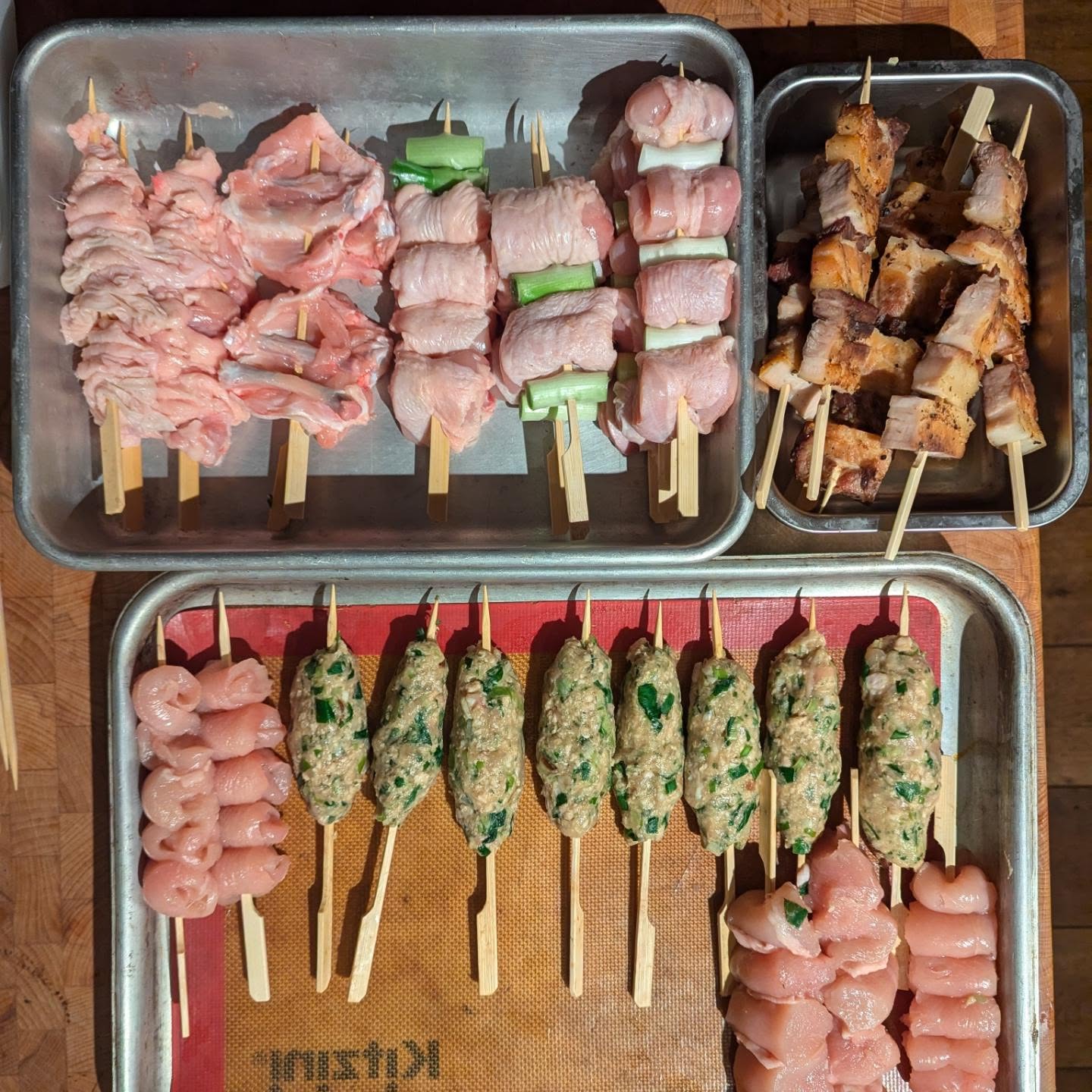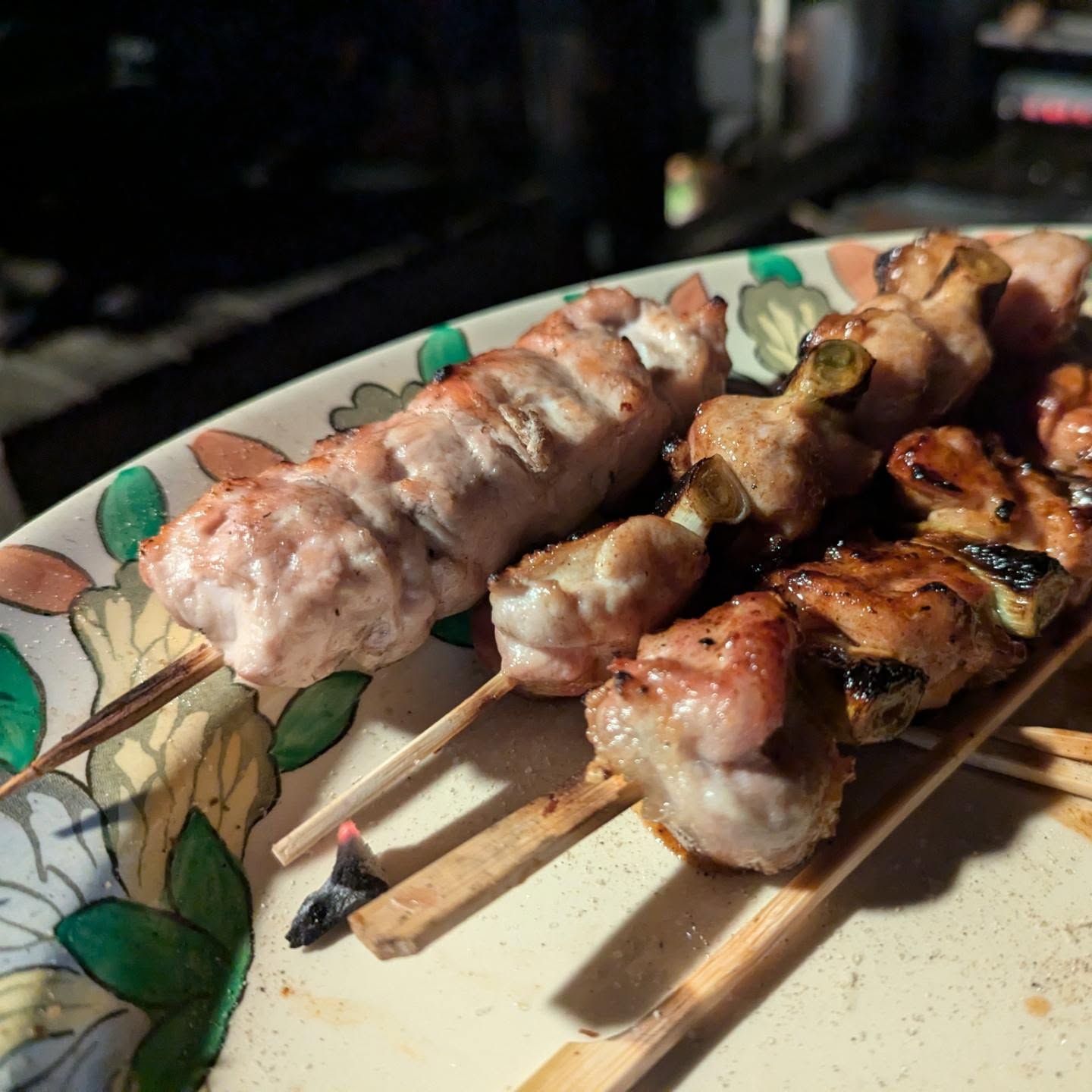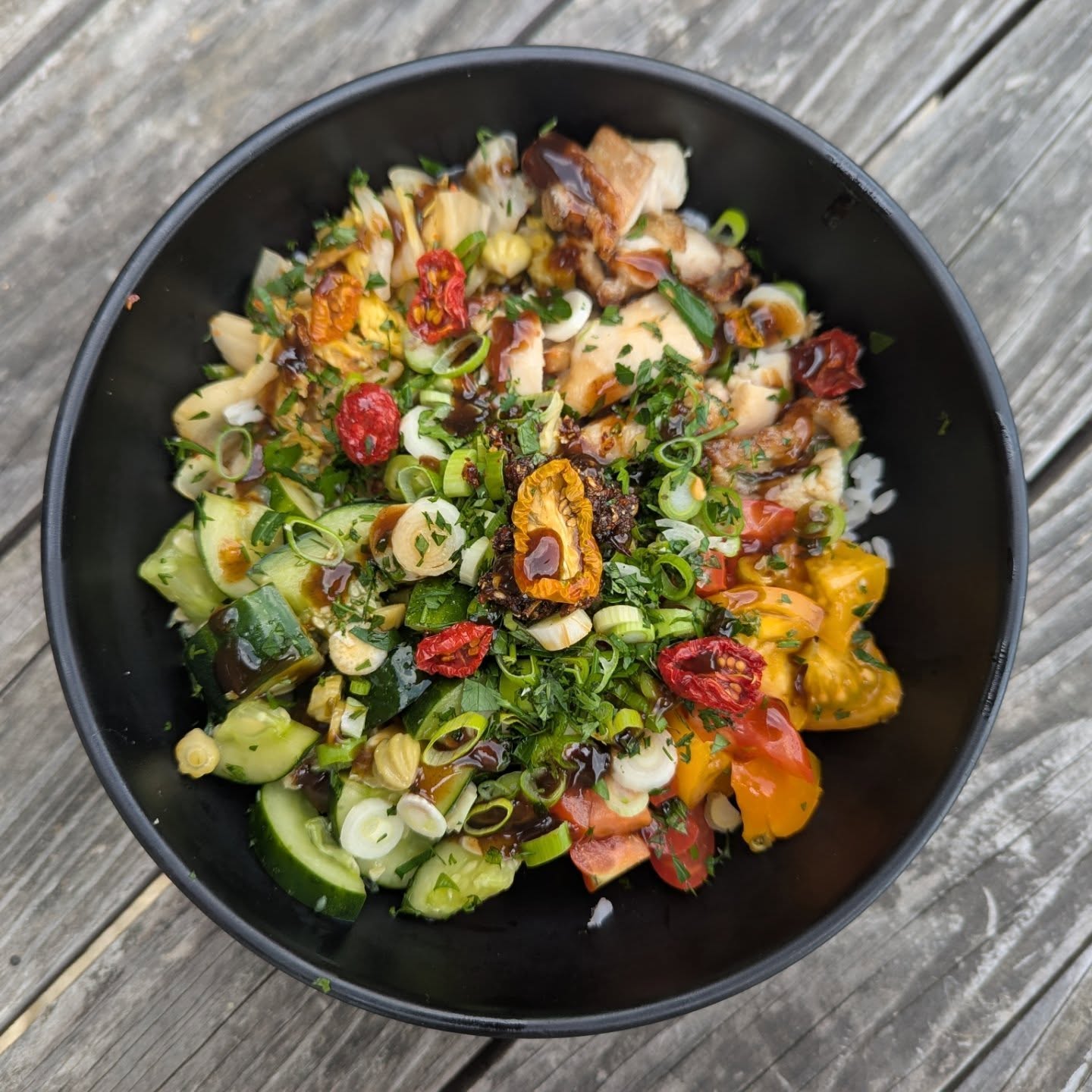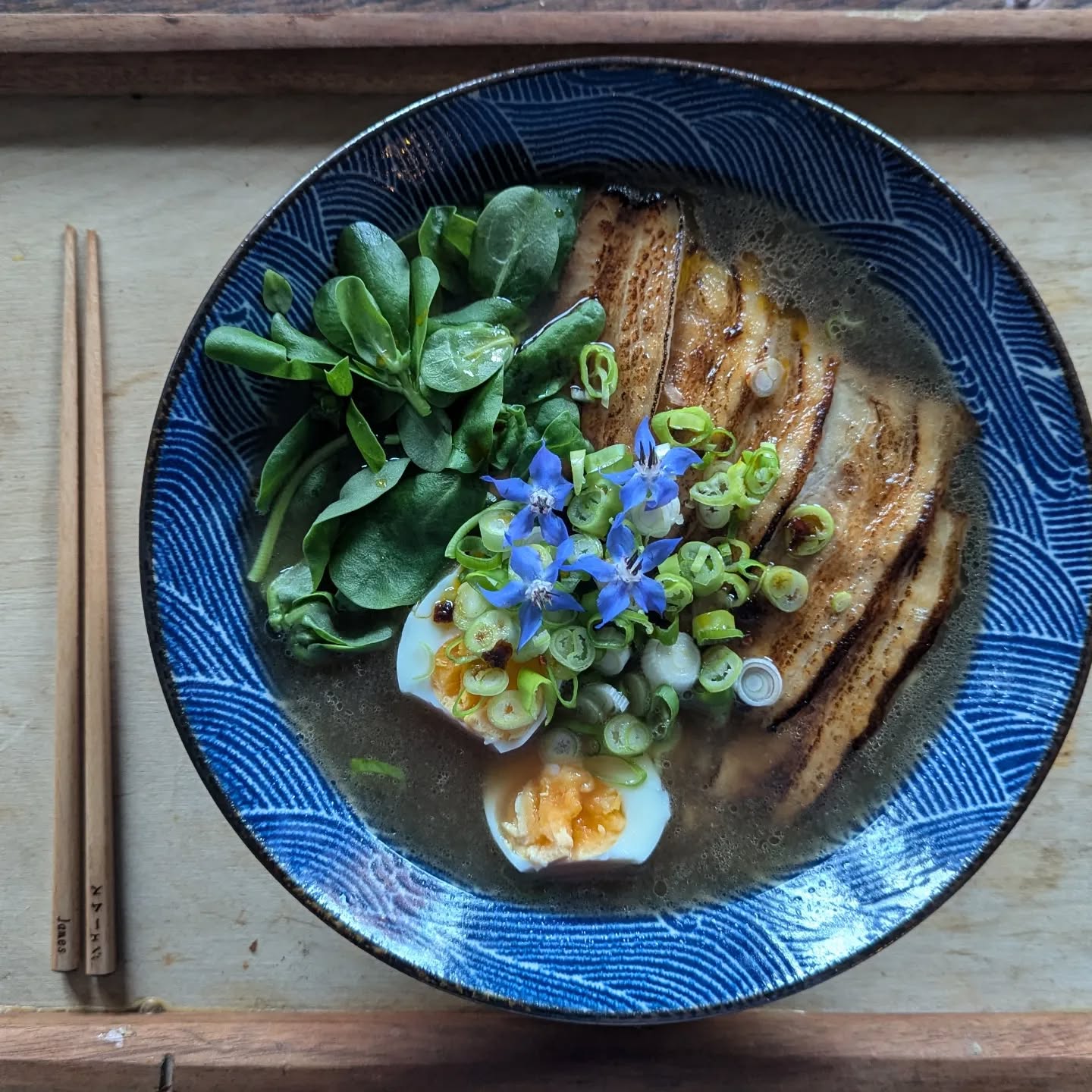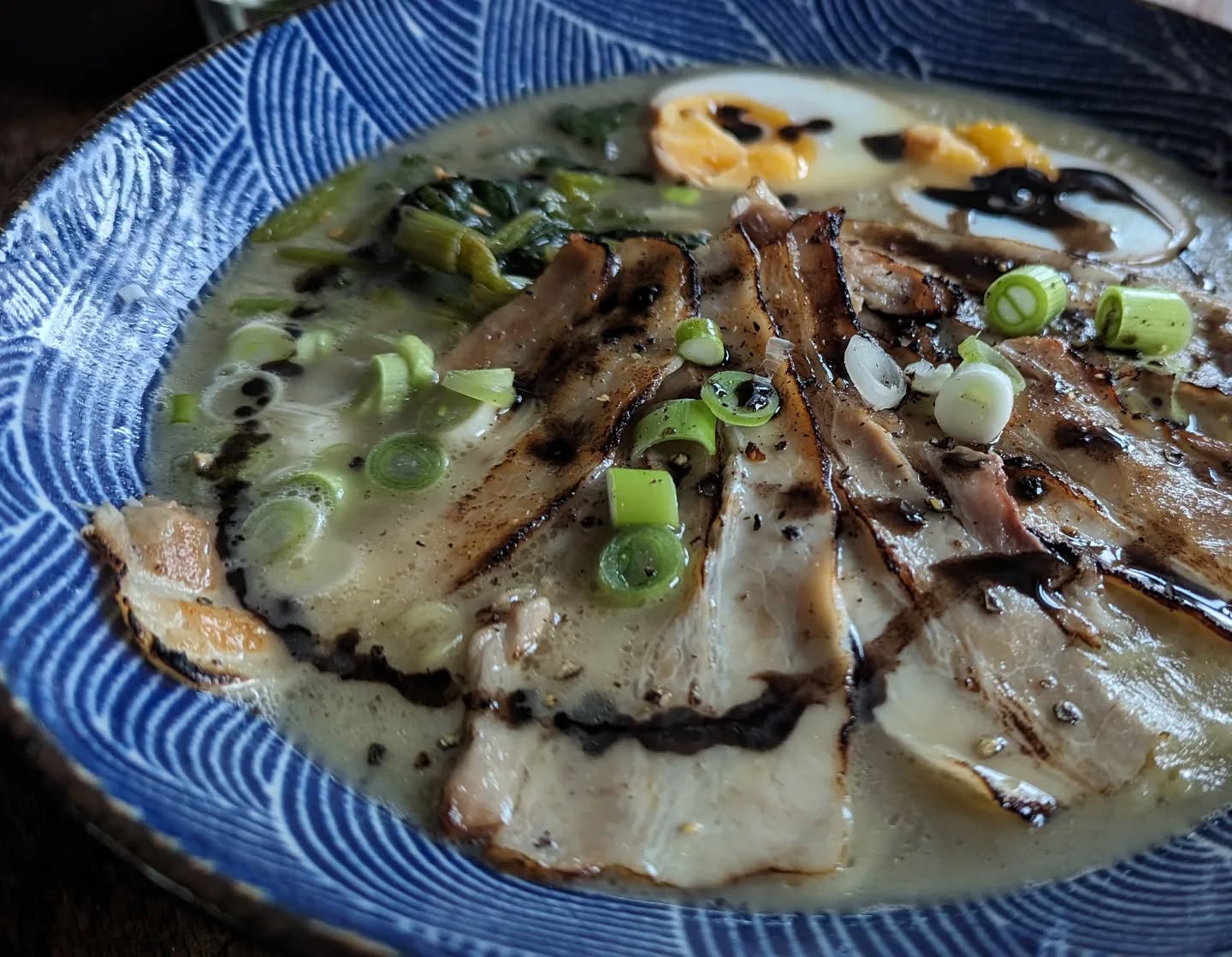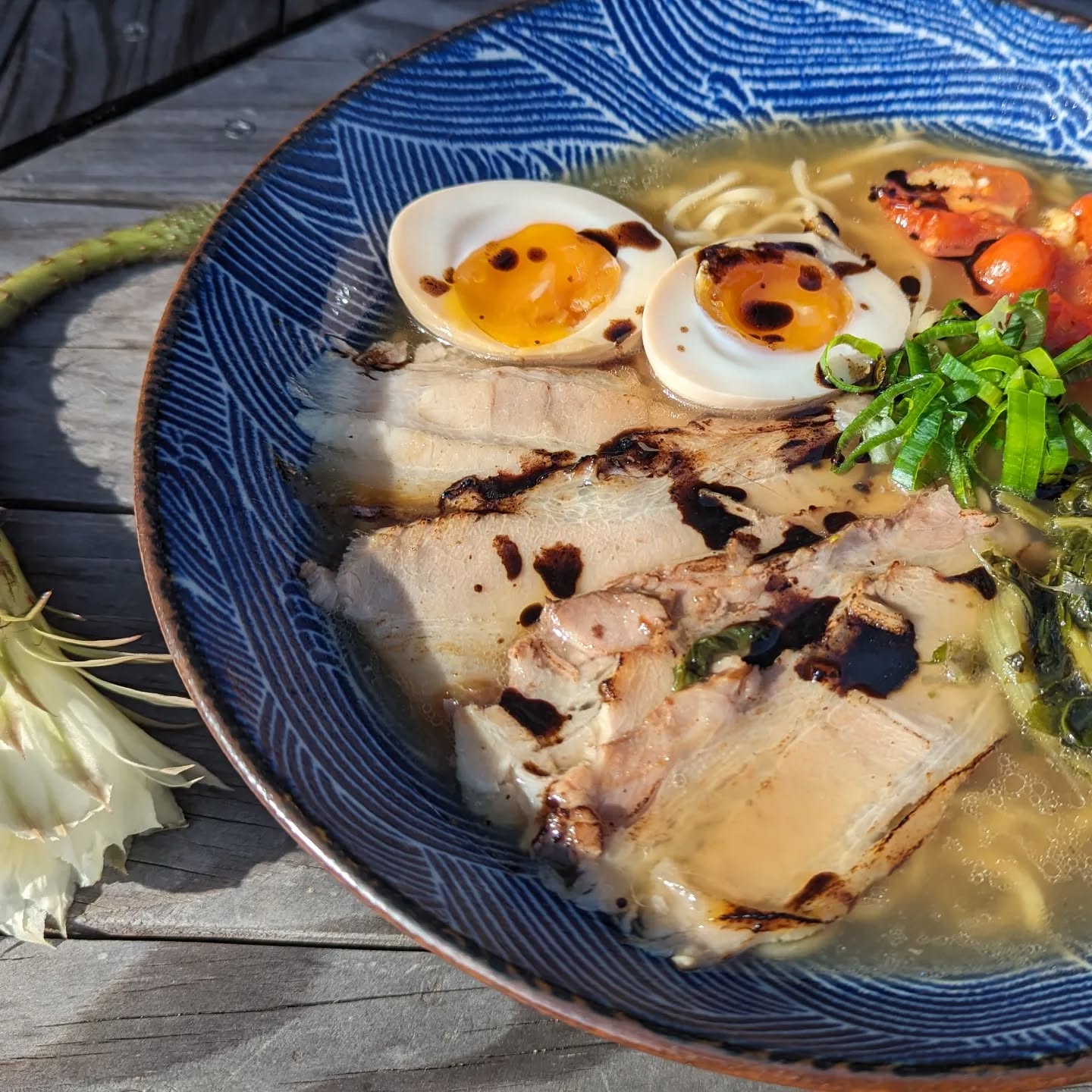· James Torr · Personal · 2 min read
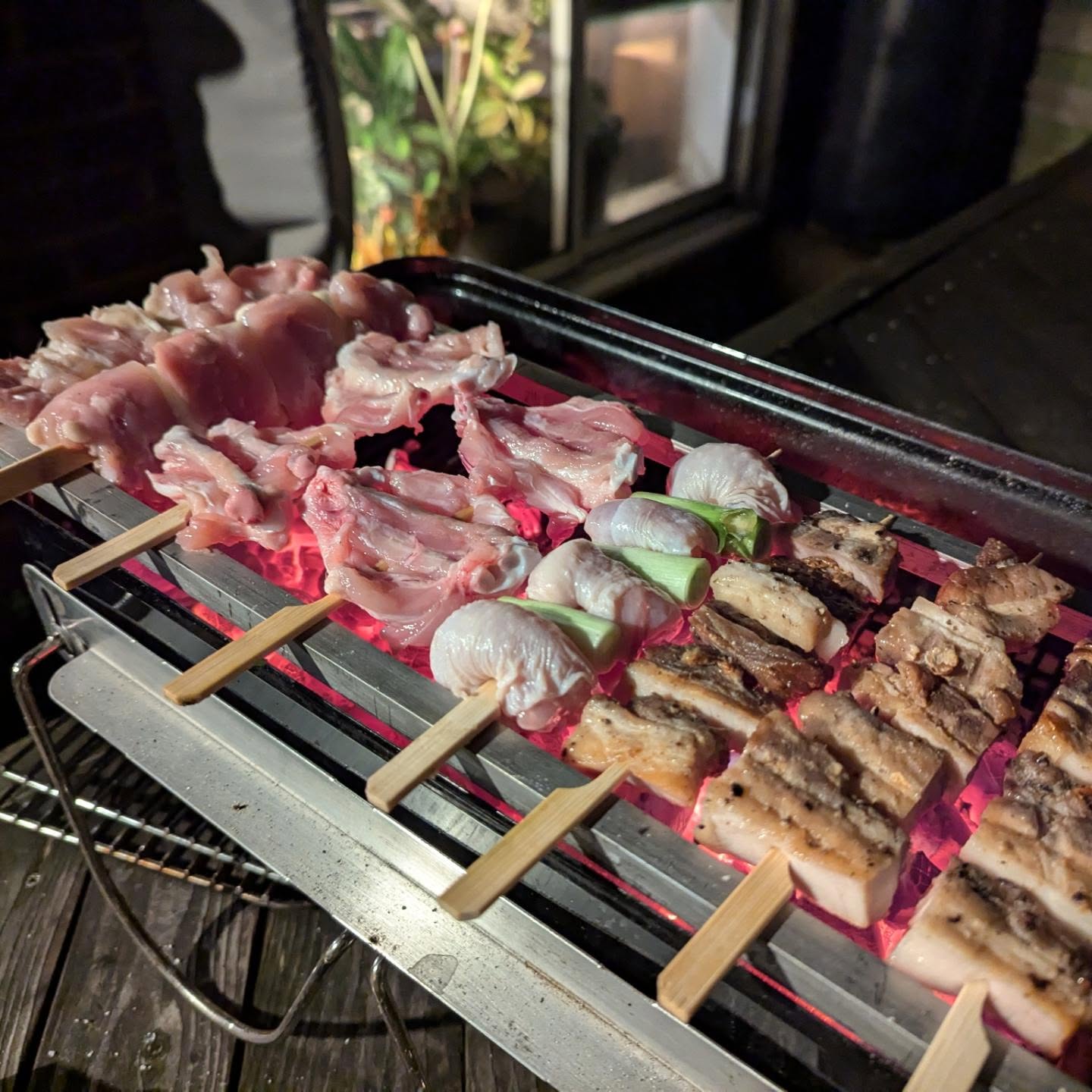
Yakitori time!
Yakitori time! Unfortunately we were too busy eating the skewers for me to get any good shots. I’ve used a small portable BBQ (Weber Go Anywhere) with some lumpwood charcoal (Big K Restaurant grade) to grill these. As some of you may know, the Japanese use a special grade of oak charcoal called binchotan. This burns for a very long time and provides a certain type of radiant heat. Second best is a reconstituted binchotan, lumpwood is third place.
I’ve used a couple of stainless steel bars (eBay) to make a rack for the skewers. You can grill directly on the bars, or make longer skewers to go the full width. The bars can get a bit sticky though, this worked out pretty well.
I butchered two whole chickens for the skewers you see, apart from a couple of breasts I froze, pretty much all of the chicken was used. In the second picture, clockwise from top left is kawa (chicken skin - also included some belly membrane), tabasaki (chicken wings, filleted here), momo (chicken thighs, this was the thigh oyster), negima (thigh with spring onions, thick as possible white parts), buta bara (pork belly, this was slow cooked for three hours in an oven before to tenderise it, but traditionally I believe it’s just grilled directly and quite chewy), sasami (tenderloins), mune (chicken breast with some fat), tsukune (ground chicken mixed with seasonings) and bottom left, mune maki (rolled chicken breast).
Some of the skewers are dipped in tare (sauce). This is made from sake, soy, sugar and is added to by the shop. They’re used for years, generations even, and added to when they’re running low. The skewers are dipped (or brushed) in the tare a few minutes from finishing, then grilled a little more, and sometimes dipped again. Not all skewers are dipped, some might be just seasoned with salt and pepper. Thigh and tsukune are the kushi (skewers) that are most commonly tare paired.
Thanks @binchoyakitori for my first yakitori experiences, and @yakitoriguy for the in depth videos!

